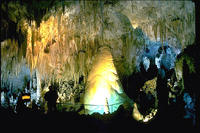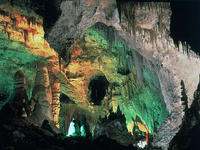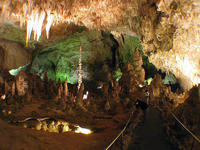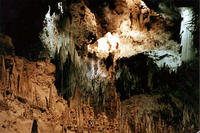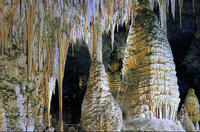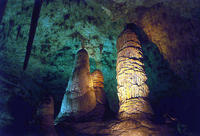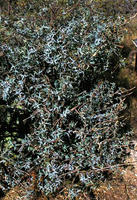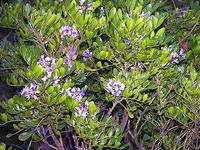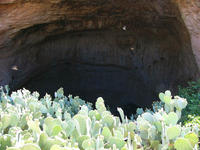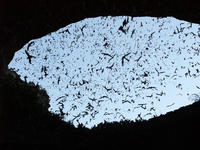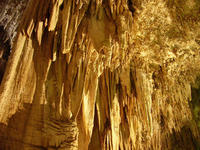You are in: North America -> United States of America -> Carlsbad Caverns Nat... , and traditional search or Image Gallery will yield results of this site only
Carlsbad Caverns National Park
| Site number: | 721 |
|
| Type of site: | Natural | |
| Date: | - | |
| Date of Inscription: | 1995 | |
| Location: | North America, United States of America, State of New Mexico, Eddy County | |
Up to 75 images are shown here. Click on each for more details or on Image Gallery for more images.
| Description: | The Carlsbad Caverns National Park is a karst landscape in the state of New Mexico. It consists of more than 80 documented caves that are exceptional not just for their vast size but also for the abundance, variety and beauty of their mineral formations. Out of all, Lechuguilla Cave stands out the most, offering an underground laboratory for studying geological and biological processes an immaculate setting. --WHMNet paraphrase from the description at WHC Site, where additional information is available. | |
| Carlsbad Caverns National Park is a United States National Park located in the Guadalupe Mountains in southeastern New Mexico. Visitors can hike into the interior rooms on their own via the natural entrance, or take an elevator (the exit for everyone) directly down into the center of the public cave area. Approximately two thirds of the park has also been set aside as a wilderness area, helping to ensure no future changes will be made to the habitat. Jim White explored many of the rooms and gave them their names, including the Big Room, New Mexico Room, King's Palace, Queen's Chamber, Papoose Room, and Green Lake Room. He also named many of the cave's more prominent formations, such as the Totem Pole, Witch's Finger, Giant Dome, Bottomless Pit, Fairyland, Iceberg Rock, Temple of the Sun, and Rock of Ages. Carlsbad, the town, and, thus, Carlsbad Caverns National Park, supposedly take their name from Karlovy Vary (Carlsbad), Czech Republic, meaning literally, Charles' Baths, in German. Balloon Ballroom - located in the ceiling above the main entrance corridor, this small room was first accessed by tying a rope to a bunch of balloons and floating them up into the passage. Bat Cave - a large, unadorned rocky passage connected to the main entrance corridor that was mined for bat guano in the early 20th century. The majority of the cave's bat population lives in this portion of the cave. Bell Cord Room - named for a long, narrow stalactite coming through a hole in the ceiling, resembling the rope coming through a church steeple to ring the bell. This room is located at the end of the Left Hand Tunnel. Bifrost Room - discovered in 1982, it is located in the ceiling above Lake of the Clouds. Its name refers to a Norse myth about a world in the sky that was accessed from Earth by a rainbow. The room was given this name because of its location above the Lake of the Clouds and its colorful oxide-stained formations. Sixteen species of bats live in the park, including a large number of Mexican Free-tailed Bats. It is estimated that the population of Mexican Free-tailed Bats once numbered in the millions but has declined drastically in modern times. The cause of this decline is unknown but the pesticide DDT is often listed as a primary cause. Populations appear to be on the increase in recent years but are nowhere near the levels that were once historically present. Many techniques have been used to estimate the bat population in the cave. The various techniques used point to a current population peak of several hundred thousand when the young pups are flying in the fall. --Wikipedia. Text is available under the Creative Commons Attribution-ShareAlike License. | ||
| Source: | http://whc.unesco.org/en/list/721 | |
| Reference: | 1. UNESCO World Heritage Center, Site Page. | |






